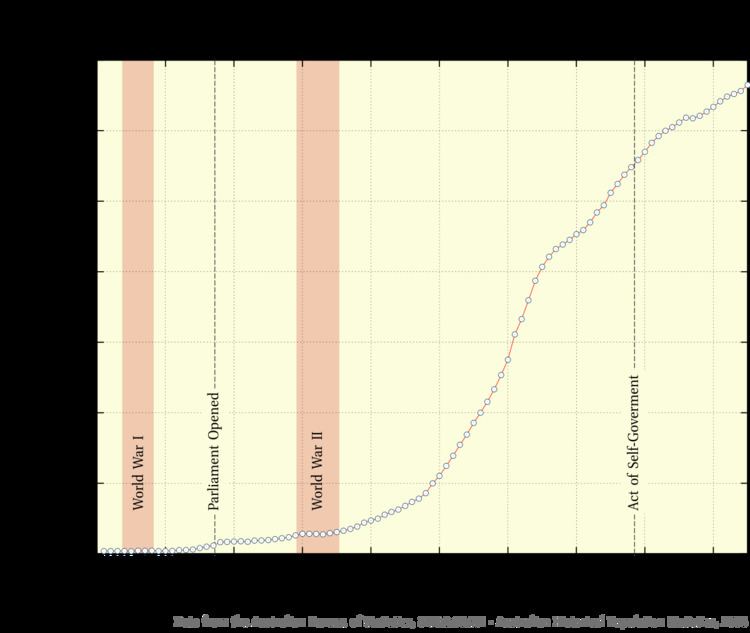 | ||
Canberra is the largest inland city of Australia, and is amongst the most populated in the Oceania. It is the capital city of Australia. At the 2011 census it had 355,596 residents. This only contains 1.6% of the total Australian population. The population density for Canberra is 443.5 people per sq kilometre.
Contents
- History
- Populations by district
- Religion
- Demographic Statistics
- Median age
- Age structure
- Population growth rate
- Birth rate
- Death rate
- Sex ratios
- Total fertility rate
- Unemployment rate
- References
More than a quarter of Canberra's population were born overseas. 28.6% of the population were born elsewhere, a large majority which come from North-West Europe, Southern and Eastern Europe and South-East Asia. The 2010 unemployment rate is estimated around 3.5%
The median age for Canberra was 34 years, and households had an average of 2.6 members.
The estimated population for Canberra as of 2011 was 355,596, constituting 175,896 males and 179,700 females.
History
The first few decades after the establishment of Canberra growth was relatively slow due to low funds after World War I. The population was nearly 2000 at the time. Until the end of World War II development was completely put on hold due to the Great Depression.
Office development accelerated rapidly in the 1960s in Civic. From 1960 - 1971, the population tripled from 50,000 inhabitants to 146,000 and climbing to 203,000 in 1976. The Australian economy went into recession in 1975, and a year later the construction industries in Canberra collapsed.
In modern times, the growth completely slowed in 1996 - 2001. However, the city experiences over 1 percent growth annually. The population in 2011 is around 358,222.
Populations by district
Gungahlin's part in growth constitutes nearly all of the growth from 1996-2001.
Religion
In the 2011 census, the most common responses for religion were no religion (28.9%) Catholic (26.1%), Anglican (14.7%), United Church (3.3%) and Buddhism (2.6%).
Demographic Statistics
The following statistics are from the Australian Bureau of Statistics.
Median age
34.0 years of ageAge structure
0-14 years: 18.4% (66,000)15–64 years: 71.2%(255,300)65 years and over: 10.4%(37,200)Population growth rate
1.6%Birth rate
13.5 births/1,000 population (2010 est.)Death rate
4.5 deaths/1,000 population (July 2010 est.)Sex ratios
There were 99.0 males for every 100 females in Canberra as of 2010.Civic had the highest sex ratio (137.2 males for every 100 females.)Deakin had the lowest sex ratio (80.6 males for every 100 females.)Total fertility rate
1.6 children born/woman (2001 est.)Unemployment rate
4.5%
